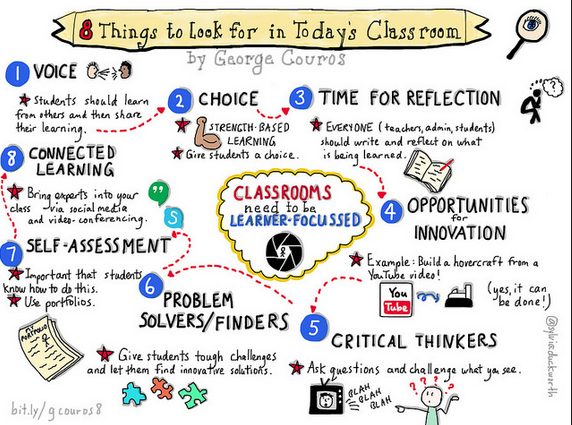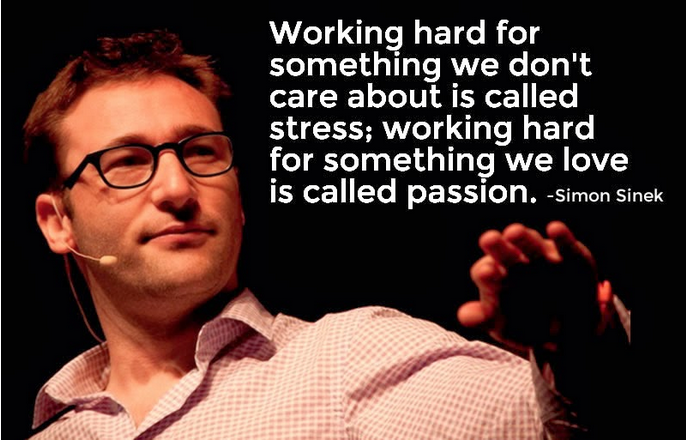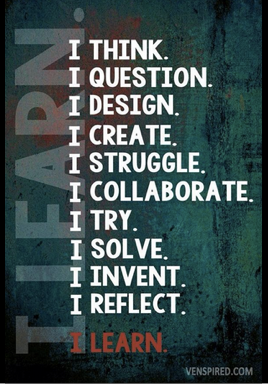
Over two years ago, I wrote “8 Things To Look for in Today’s Classroom”, and more recently, Sylvia Duckworth created the above visual that has been shared numerous times. As I am in the process of going deeper into the topic, someone asked me if this is something that we could do in professional development. As someone who is a big believer in creating experiences for educators where they partake in the types of learning that should happen in the classroom, I thought this suggestion made total sense.
To be honest with you, professional learning in many cases needs an overhaul. If the best thing that professional learning has to offer is lunch, we need to think different. But how many educators are really excited about the types of professional learning opportunities that are offered in their school? Like, “wake-up-in-the-morning-and-can’t-wait-to-get-to-work” excited? What is promising though, is that many schools are moving away from the traditional types of professional learning that weren’t working for staff, and trying some new ideas.
[Tweet “”If the best thing that professional learning has to offer is lunch, we need to think different.“”]
Below, I am going to offer some of my own thoughts, not solutions, to different ways that professional learning can happen in schools and districts. This is more “thinking openly” for myself than anything, but I wanted to try to go deeper into this process.
So where I thought I would start is taking each one of the elements shared in the “8 Things”, and try to share an idea that focuses on one of the elements specifically, but obviously, each idea can have multiple elements.
Here is each element with the corresponding letters to identify them in each activity.
Voice (V), Choice (C) , Connected Learning (CL), Problem-Finders/Solvers (PFS), Reflection (R) , Self-Assessment (SA), Critical Thinking (CT), Opportunities for Innovation (INNO)
Below is each element, with the rationale on why it is important, and then one or two ideas, either large or small, and not necessarily delivered on a typical professional development day
Voice
Rationale: Sharing ideas with others openly, can lead to what Chris Andersen would refer to as “crowd-accelerated innovation”. Empowering only a few voices often leads to ideas only from a few people, which does not tap into the ability that we have to flatten our organizations in our world today. Sharing “voice” openly also helps educators to be more cognizant of their digital footprint.
Idea: Similar to the #EDUin30 initiative, staff could share through video reflections something that they have learned at a professional learning day, or on a monthly basis that could easily be compiled into a Storify document to be shared with the community. Some people are not comfortable sharing on video, so they could easily share to a hashtag a picture, a blog post, or any other type of media. This really taps into the “wisdom of the room”, and could have a major impact on the culture and community, when we see everyone as a teacher and a learner.
“What if every teacher tweeted one thing a day that they did in their classroom to a school hashtag, and they took five minutes out of their day to read each other’s tweets? What impact would that have on learning and school culture?”
Other elements that could be incorporated: Reflection, Connected Learning, Self-Assessment, Critical Thinking
Choice
Rationale: “Owning the learning” helps to ensure that the learning actually happens, yet a lot of professional learning is top down and decided for individuals. A.J. Juliani, in his post “The Struggle to Do Work that Matters”, shared this quote from Simon Sinek.
Tapping into one’s passions for learning, is more likely going to lead to people not only going deep, but embracing what they have learned, and giving them the opportunity to lead, hopefully developing “intrapreneurs” and innovators within the organization.
Idea: EdCamp has been sweeping the entire world, and is a great way for educators to have ownership of their learning. Sessions are developed, created, and led, by educators that partake in the event, which lead to rich and deep conversations, because the people in the room are passionate about the topic. The EdCamp format is something that should happen a lot more in professional learning days with schools. Many would say that this is not something they have time to do with a limited amount of time for professional learning, but if “learning” is the priority of the school, creating time and opportunities for deep learning should be the norm, not the exception.
Other elements that could be incorporated: Voice, Reflection, Critical Thinking, Opportunities for Innovation, Problem Finders-Solvers
Reflection
Rationale: Reflection is not only powerful for learning, but powerful for personal growth, and should be embedded into all of our professional learning days. Although collaboration is an important process to growth of an organization, people need time to process ideas and thoughts, and without actually having that time to think, we lose out on many voices. Also, learning is deeply personal, and without reflection time and having the opportunity to connect your own ideas and personal learning to what is being shared, it is harder to go deep into ideas.
I reflect, therefore I learn.
This is something that is necessary in our learning environments today.
Idea: One of the practices that I have done at my workshops, is that I will share ideas and some of my thinking, but then give an extended break with reflection time embedded into that time. I will use something as simple as a “Google Form” to give people an opportunity to process their thoughts, while also tapping into the power of open reflection. Knowing that your thoughts are going to be open to not only each other, but the entire world, sometimes help people process and think deeper about the ideas that they are about to share. As Clive Thompson suggests;
“Having an audience can clarify thinking. It’s easy to win an argument inside your head. But when you face a real audience, you have to be truly convincing.” Why Even the Worst Bloggers are Making Us Smarter
The one element of this that is really important is asking people to not only share their thoughts, but to ask questions moving forward. Asking questions is often more important to learning than knowing answers because they drive us forward. As I have said before, school should not be a place where answers go to die, but questions come to life. Asking questions is imperative in the reflection process.
Other elements that could be incorporated: Voice, Self-Assessment, Critical Thinking, Connected Learning
Problem-Finders/Solvers
Rationale: Ewan McIntosh has a brilliant Ted Talk discusses the notion of “problem-based learning” and how it is not beneficial to give students problems that aren’t real. Instead, he focuses on the idea that students need to be “problem finders”; being able to find some tough challenges and then being able to solve those problems. If we are to ask students to find and solve problems in the classroom, it is essential that we put ourselves in situations where we are doing the same in our work. How often are we put in situations as a staff where we are asked to identify and solve problems as a staff on our pursuit to creating better opportunities for our students? Short answer; not enough.
This visual by Krissy Venosdale should not only be reserved for our students, but everyone involved in education as we are all learners:
These are all crucial characteristics of the problem finder/solver, and something that we should work to develop at both the individual and organizational level.
Idea: Recently, I wrote a post on the idea of “Inquiry Based Professional Learning”, and tweaked the introduction from Alberta Education on Inquiry Based Learning to reflect the importance of the process for staff;
“Effective inquiry is more than just asking questions. Inquiry-based learning is a complex process where
studentslearners formulate questions, investigate to find answers, build new understandings, meanings and knowledge, and then communicate their learnings to others to create real solutions to improve learning and the environment of the classroom(s) and school. Inclassroomsa school whereteachersadministrators emphasize inquiry-based learning,studentsstaff are actively involved in solving authentic (real-life) problems within the context of the curriculum and/or community. These powerful learning experiences engage and empowerstudentsstaff deeply.”
If you read the comments from the post shared by others, you will not only see ideas from schools around the world that are already doing variations of the process, but finding it powerful in their professional learning. By looking at not only challenging the way schools are, but empowering our community to act upon their solutions, this could be a very valuable process in helping our organizations move forward, while modelling the type of learning we want to happen in our classrooms.
Other obvious elements that could be incorporated: Critical Thinking, Voice, Choice, Opportunities for Innovation
Moving Forward
The deeper I go into this topic, the more I realize how important it is to really think about professional learning and how our experiences, shape opportunities for our students. Please feel free to comment and share your ideas/thoughts/questions below. I will look at the other four elements in the next blog post.

